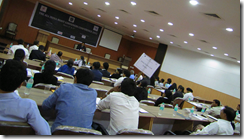
NLIU Bhopal organised the first All India Moot Conveners Conference last weekend, which saw debate, discussion and resolution on various moot related issues by participating moot organisers.
A total of 18 law schools from across the country participated in the conference which was hosted by NLIU Bhopal and sponsored by Surana & Surana International Attorneys. The conference was the brainchild of NLIU Bhopal student Bishen Jeswant.
MPL 3 Quicklinks:
The participants discussed a plethora of issues plaguing Indian mooting, right from the format of conducting the preliminary rounds to the necessity of having at least one past mooter on the bench in each round of the moot.
A total of 36 resolutions were proposed during the conference out of which 32 resolutions were passed. These 32 resolutions now form the Guidelines for Uniform Moot Practices in India (GUMP).
[Click here to download GUMP, which contains the detailed proposals]
“There was no incentive in terms of awards and still around 20 institutions turned up, which was great to see,” commented Bhavesh, who is a member of the moot court society at Christ University Bangalore. “The endeavour to achieve a near perfect moot format is a good thing and we should continue to try and achieve it.
“There has been an increase in the number of moots and the increase has not been in a systematic way. This is a united step for laying a common standard which is better for mooting fraternity and legal students.”
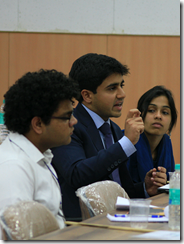
The participants agreed to improve upon the existing moot formats (two wins or cumulative scores). Under the ‘two wins’ format, it was agreed that there should be a method of seeding to ensure that the best teams in the moot do not face each other during the prelims. It was agreed that the teams participating in a particular moot should be seeded based on their memorandum scores.
To prevent disparate scoring by various judges on the bench, the participants came up with a fixed range of scoring: 60 – 70 for poor, 70 – 80 for average, 80 – 90 for good and 90 – 100 for very good. This is similar to an adjudicator’s range of scoring in a standard parliamentary debate (69 to 81). It was also resolved that the memorandums should be evaluated by the same set of individuals.
However, not all moot organisers agreed to follow the resolved method of scoring. “GLC Mumbai which organises the DM Harish & Nani Palkhivala moots abstained from voting on certain resolutions as they did not want to change their current scoring patterns”, said Jeswant. “However, as far as practicable, such a scoring system will eliminate dissimilar scoring patterns by judges and reduce arbitrariness.”
It was also resolved that all moots having more than 16 and 32 participating teams should mandatorily have a quarterfinal and octafinal round respectively. During the knockout rounds of every moot, it was agreed that a method of power matching would be followed to decide the opposition. The participants also came up with a model draw of lots that ensures that teams do not face each other in both the prelim rounds. Moot organisers also concurred that teams should not be judged by the same bench in the preliminary rounds and that they should have equal preparation time between their rounds.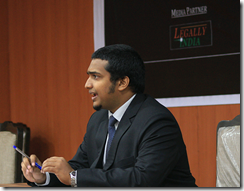
One of the resolutions which failed during the conference was the requirement that High Court and Supreme Court judges should not constitute a majority in any moot court bench.
Mooting database and other best practices
The participants decided to set up an online database of award winning moot memorandums, judges, academic calendars of institutions, etc. The portal is to be moderated and managed equally by the participants. Campus Law Centre, New Delhi has come forward to set up the portal by June 2012.
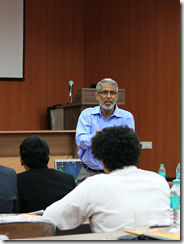
The colleges also resolved that in the interest of participants from less privileged backgrounds, use of butter paper, book binding, bond paper, transparency sheets and so on in the making of memorials should be banned. Standard A4 size paper should be used and bound by simply stitching, stapling or using basic spiral binding.
Jeswant said that 80 per cent of the participants at the conference were students and the rest were law faculty and other moot organisers.
“This conference is a good start to improve the standards of Indian mooting”, he said. “The participants in the conference decided that such a conference should be made an annual event where moot organisers can re-evaluate, discuss and resolve moot related issues every year.”
RMLNLU Lucknow won the bid to organise the conference next year, ahead of Campus Law Centre, New Delhi and Nirma University, Ahmedabad.
Participating colleges were:
- NLIU Bhopal
- NLU Jodhpur
- RMLNLU Luckow
- Nuals Kochi
- NLU Orissa
- Symbiosis, Pune
- GLC Bombay
- Christ University Bangalore
- Campus Law Center Delhi
- Jindal Global Law School (JGLS) Sonipat
- Nirma University
- Symbiosis, Noida
- Law Center-1, Delhi
- School of Law, CUSAT, Kochi
- Akola Law College, Akola
- RDVV, Jabalpur
- MATS, Raipur
- New Law Academy, University of Pune
Legally India was online media partner to the event.
[Click here to download the Guidelines for Uniform Moot Practices in India (GUMP)]
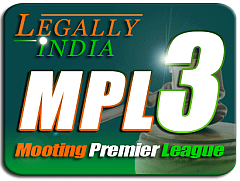
threads most popular
thread most upvoted
comment newest
first oldest
first
height of joblessness
Height of jealousness
Height of ignorance
Height of nonsense
Height of common senselessness
Vis is very different from Jessup and permits, in fact encourages such practices.
There is no issue with the Stetson Moot, whose Rules in fact allow it. The Stetson Rules state, "All team members may participate in any other aspect of the Competition,including practice rounds, research, and drafting." Also, these rules state, "Nothing in this rule prevents non-coach, practice-round judges from seeing different teams". It therefore seems Stetson Practice Moots won't be an issue.
Regarding Jessup:
Rule 2.4.4 of the Jessup Rules state that "engaging in practice moots against a participating Team amounts to prohibited assistance". However, Rule 2.4.5 of the Jessup Rules state that "teams may organize 'practice rounds' of oral pleadings involving the Competition Problem to prepare the Team for competition. In practice rounds, the persons presenting arguments for the Applicant and Respondent must be from the same Team".
The GUMP does not state the manner of conducting the Practice Moots. They may simply have ex parte rounds without exchange of memorials. The teams will gain from the practice as well as the feedback being given by external judges. To make it clear, having external judges is not prohibited as the rules (Rule 2.4.7) state that "Anyone who is not a registered Team Member or registered Team Advisor may not serve as a judge in practice rounds unless they do so only after the submission of Memorials". This may not be as beneficial as having practice rounds against real opposition, but will definitely provide some value addition to the preparation of the teams.
Please get your facts right before raising allegations. I don't know about NALSAR, but NUJS took permission before using the Jessup Compromis for the challenger rounds. The email is in the nujsmcs mailbox.
Is this like the rebel league?
If you wish to criticise, please do so in a civil and intelligent manner.
Please in particular consider the following above the comments box, for instance: "be nice to other readers and live people who likely have feelings too".
Best wishes
Kian
what a masterpiece. guys these so called Gump is nothing but the bump remains of the nliu juris corp moot everything is copied on that pattern i wonder how come 13 parties to it hav tolerated dont u guys hav ur own mind that u r running on a bump created by a miserable law student of fifth year
by this nliu seeks to have an upper hand in organizing biased moots as it does at juris corp
NO CONFIDENCE
About the idea being copied: Debating in India does not have an Organized Annual Conference, and mooting most certainly does not.. at the very least, there is some novelty attached to the GUMP, into which a lot of thought has gone, and is codified.. so while one should not take undue credit, credit must also be given where it is due..
threads most popular
thread most upvoted
comment newest
first oldest
first